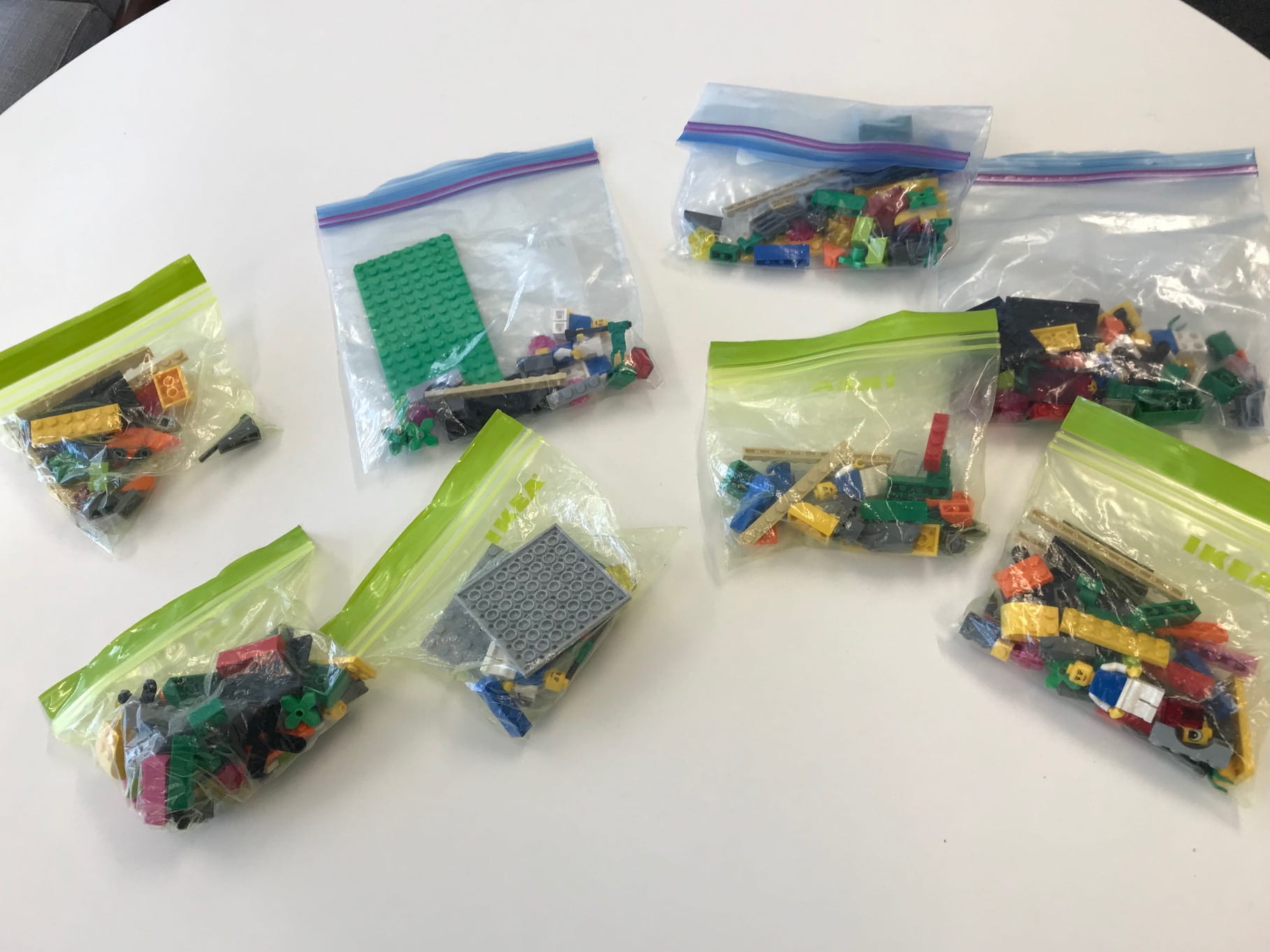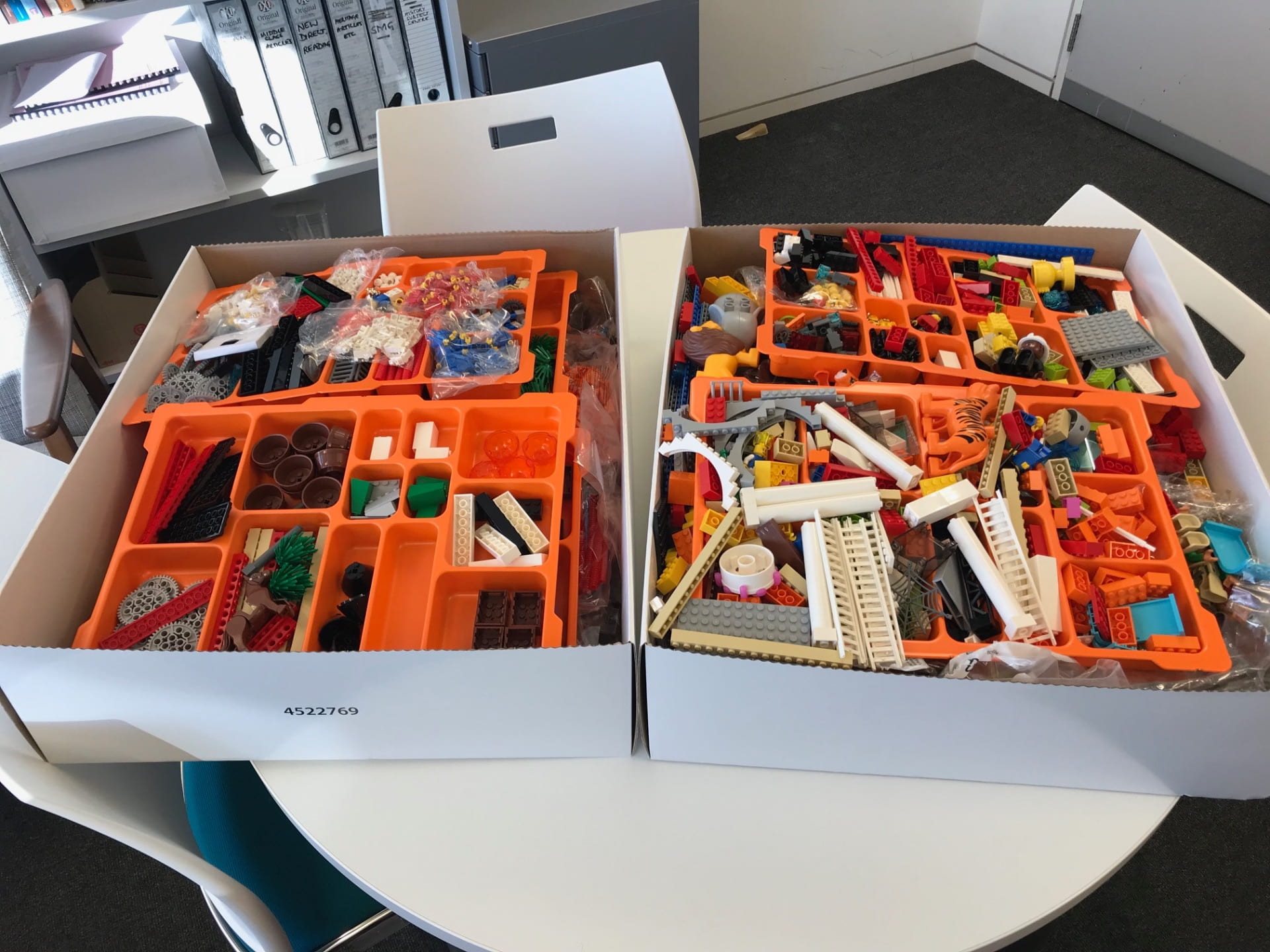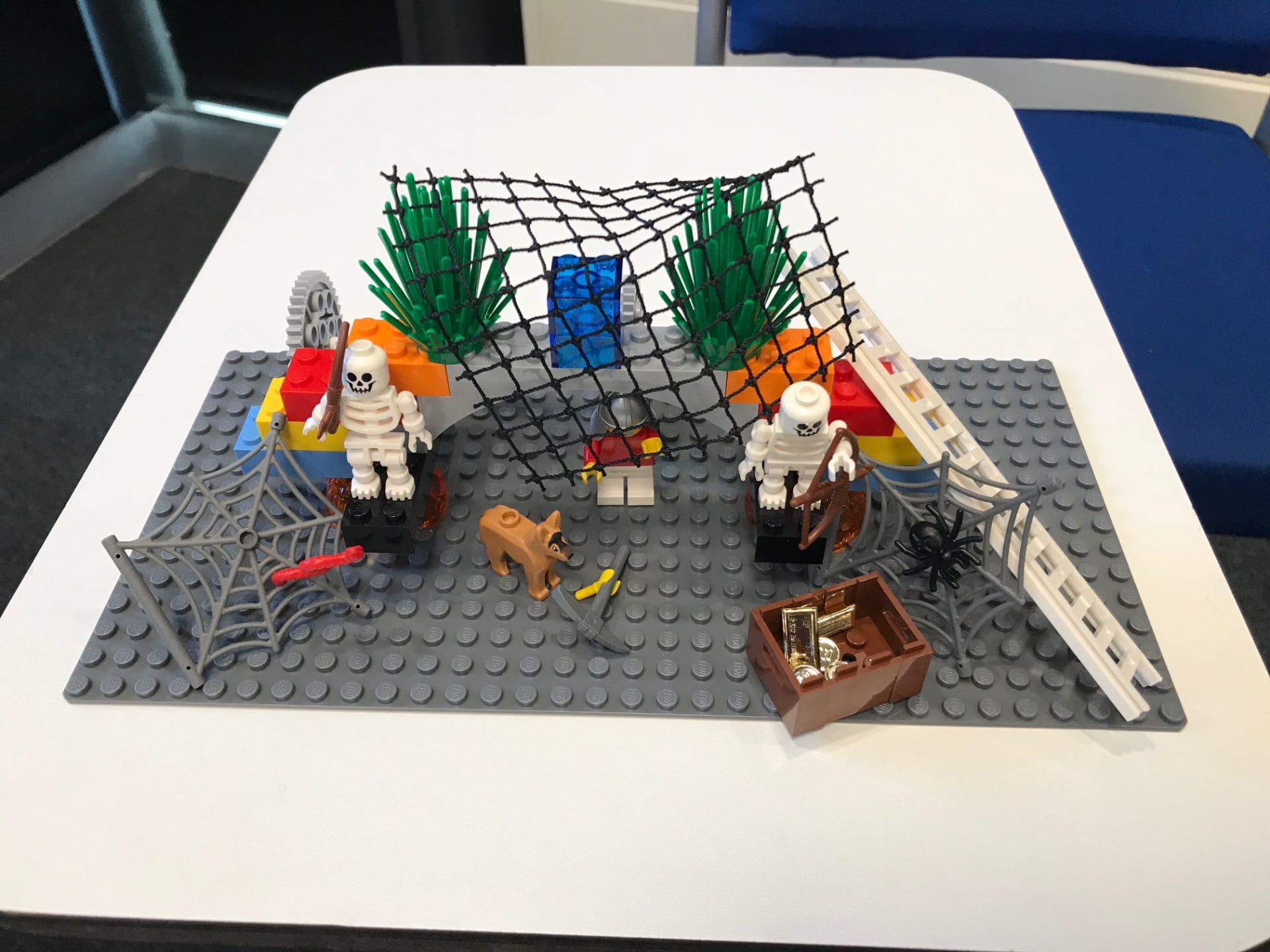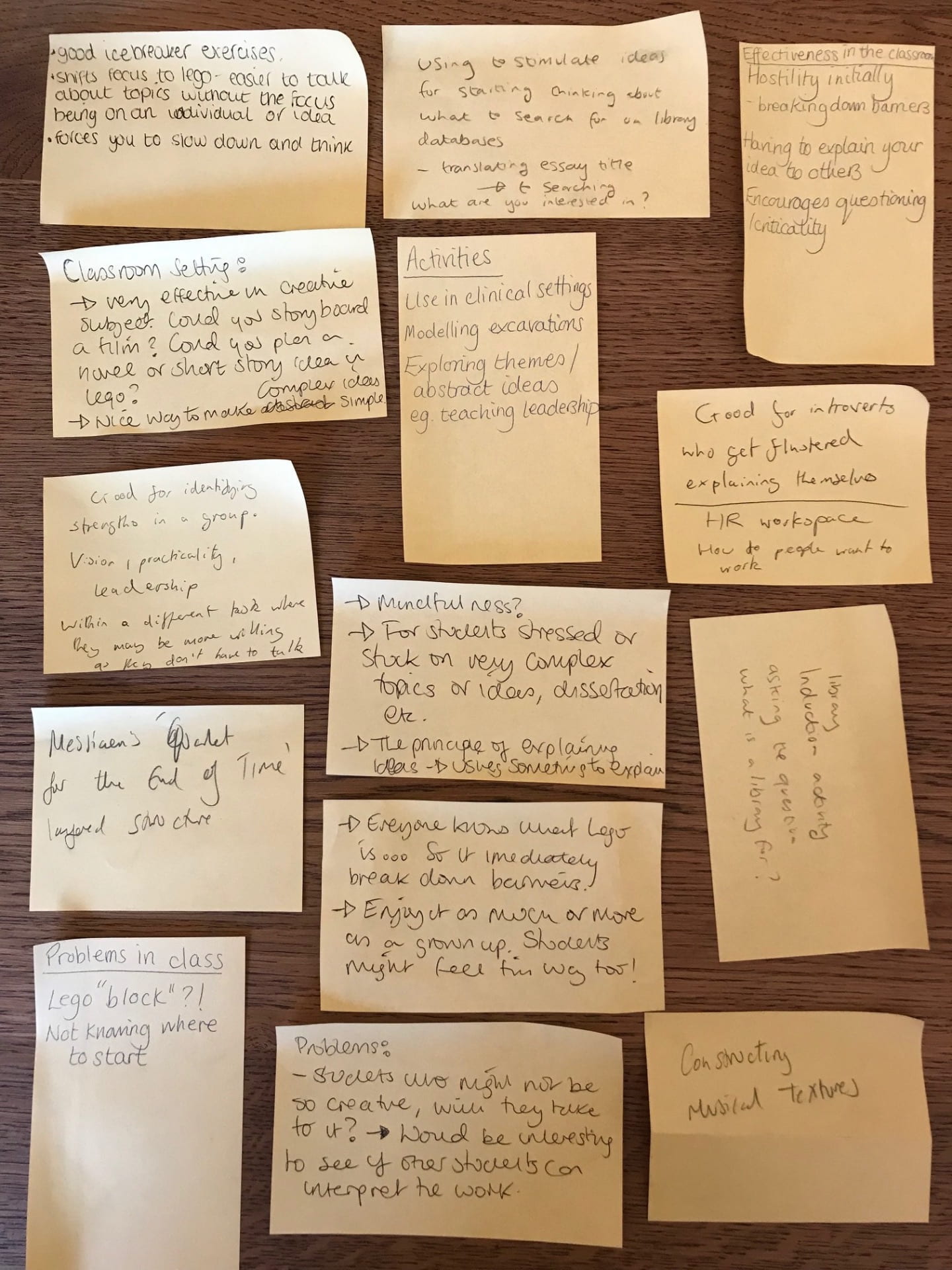By Dr Jamie Wood and Dr Katherine Fennelly
Over the past few years, we’ve been using Lego Serious Play to help students engage with their learning in seminars. This can involve making models out of small packs of Lego, like these:
We’ve also used much larger ‘Connections’ and ‘Identity’ packs:
Building on these experiences, since September 2018, we’ve been running a project called ‘Constructive play: Lego for learning in history, heritage and beyond‘ and funded by the College of Arts Teaching and Learning innovation Fund to share what we’ve learnt about using Lego to teach History and other subjects at the University of Lincoln. You can find out more about the background to the project and its first stage, here.
Staff in the Sandpit
In the autumn we ran a ‘sandpit’ workshop with staff from History and Heritage. In the spring semester we ran another sandpit session, attended by 15 colleagues from the College of Arts and beyond, including Music, Media, Design, the Library, Health & Social Care, and others. In the spirit of ‘constructive play’, rather than a formal presentation of our project at which we gave ‘the answers’, attendees were asked to use the Lego to work together and consider how it might be used in their own disciplines. Here are some of the models that they made:
We collected feedback on post-it notes:
Attendees identified a number of key areas in which Lego could be useful, some discipline specific and some more generally applicable. Some areas that were pinpointed included:
- Using Lego for icebreakers and starters due to its familiarity (‘Everyone knows what Lego is so it immediately breaks down barriers’).
- It has the potential to aid abstract thinking and help students to break down complex ideas into their constituent parts. It might also help some students to explain their ideas to others in a different kind of way.
- Lego could be useful for guiding students through the creative process, e.g. in storyboarding scripts or deconstructing layers of musical scores.
- Taking the focus away from the individual and putting it on the Lego object might engage students who are normally reticent to engage.
We also discussed potential barriers to engagement, including ‘not knowing where to start’ and possible hostility to the idea as not being sufficiently academic.
Student sandpit and micro-exhibition
Following the staff sandpit sessions, we invited students from across the School of History and Heritage to participate in a lunchtime sandpit session. Students were invited to play with the Lego, undirected, and to construct models which would be placed in a micro-exhibition outside the School of History and Heritage during the Festival of Creativity.
After a short introduction in which the idea of Constructive Play was outlined, most students constructed abstract models based on dissertation research or research interests, which ranged from literal constructions of buildings to the use of Lego to communicate abstract ideas in a dynamic way. Students were drawn from all year groups, from Level 1 to postgraduate. The Lego acted as a conversation driver throughout the session. Students reminisced about playing with Lego as children, and compared building styles and materials. Conversation was stimulated by the process of model-making, evidencing the potential for using these activities as ice-breakers.
Following the student sandpit session, students were asked to write 100-word summaries of their models. The summaries and the models were compared, and the best model was awarded a small prize. All of the models were exhibited outside the School of History and Heritage for two weeks, as representative of the potential for Lego to communicate abstract thought and aid with the development of ideas.
Here’s an image of the winning model, with the commentary:
“The red structure represents the crown Elizabeth II, complete with jewels. The Queen is in the centre, surrounded by her crown that protects and symbolises her. The four men on the outside represent her people, who are outwardly frowning, representing the growing discontent during her reign. However, their faces are neutral on the inside towards where she can see, representing the lack of public criticism directed at her. This model is a representation of my dissertation which analyses the growing criticism of Queen Elizabeth II during the 1950s in the wider context of declining deference towards the throne.”
The project has been successful in showcasing the use of Lego in teaching. After the sandpit sessions a number of colleagues have contacted us to express an interest in using the Lego and during the course of the project we’ve become aware of a number of people who are already making use of Lego across the University. We hope to do more work with colleagues and students in the future!
Resources:
You can see the slides from the sandpit session here.
You can read another blog about the project that we’ve written for the Lincoln Academy of Learning and Teaching, here.






